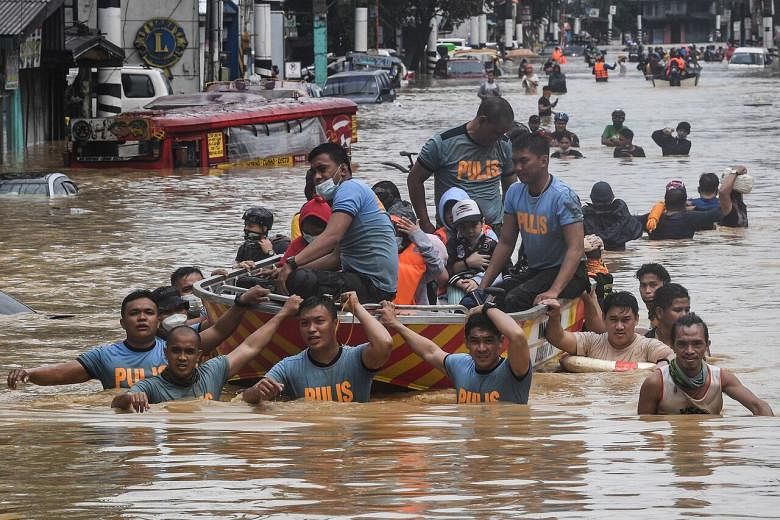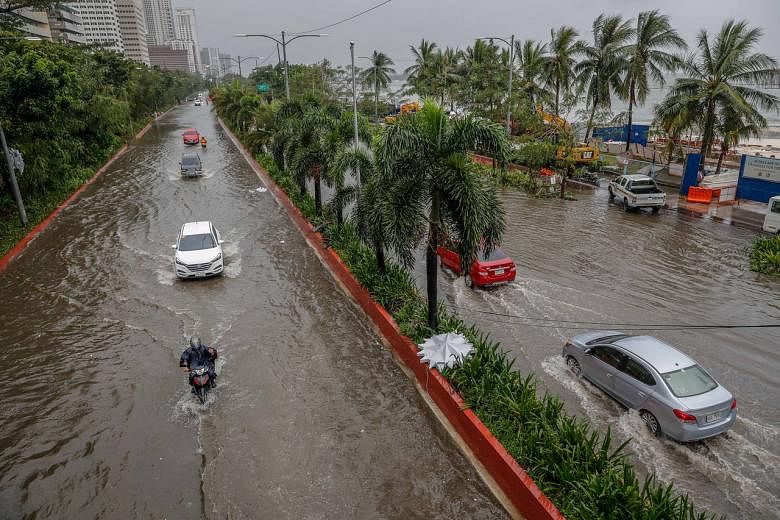MANILA - A typhoon that gathered devastating strength pummelled the main island of Luzon overnight, dumping record levels of rain that set off massive flooding and paralysed nearly all of Metropolitan Manila on Thursday (Nov 12).
Dramatic rescues played out across several cities in the capital region, with tens of thousands rowed out of flood waters on rubber dinghies, small motorised boats, canoes and even jet skis.
In Marikina city and nearby Rizal province, home to nearly three million, residents fled to the upper floors of their homes or climbed onto rooftops as flood waters rose rapidly after a 78km river breached its banks.
"We are overwhelmed with the extent, magnitude of the flooding we are experiencing now… We are preparing for the worst-case scenario," Marikina Mayor Marcelino Teodoro told radio station DZBB.
Mr Teodoro said he had received reports that several of those on their rooftops since the early hours of Thursday were already suffering from hypothermia. "Many are terrified," he said.
He pleaded for civil defence forces to send helicopters to help with the rescue. Up to 40,000 houses were left underwater, and his city only had 50 rubber boats to dispatch, he said.
President Rodrigo Duterte ordered government agencies to rush aid to people affected by Typhoon Vamco.
"Rest assured, the government will not leave anybody behind," Mr Duterte said in a national address, pledging shelter, relief goods, financial aid and post-disaster counselling.
Typhoon Vamco, known locally as Ulysses, made landfall at around 10.30pm in Patnanungan town in Quezon province, 130km east of the capital Manila, with winds of up to 150kmh and maximum gusts of 205kmh.
The typhoon was not seen as particularly alarming, as it had been classified as a tropical storm through most of its journey across the Pacific.
But it quickly gathered strength as it approached Luzon's eastern seaboard, and then rolled just 60km north of Manila on its way to the South China Sea.
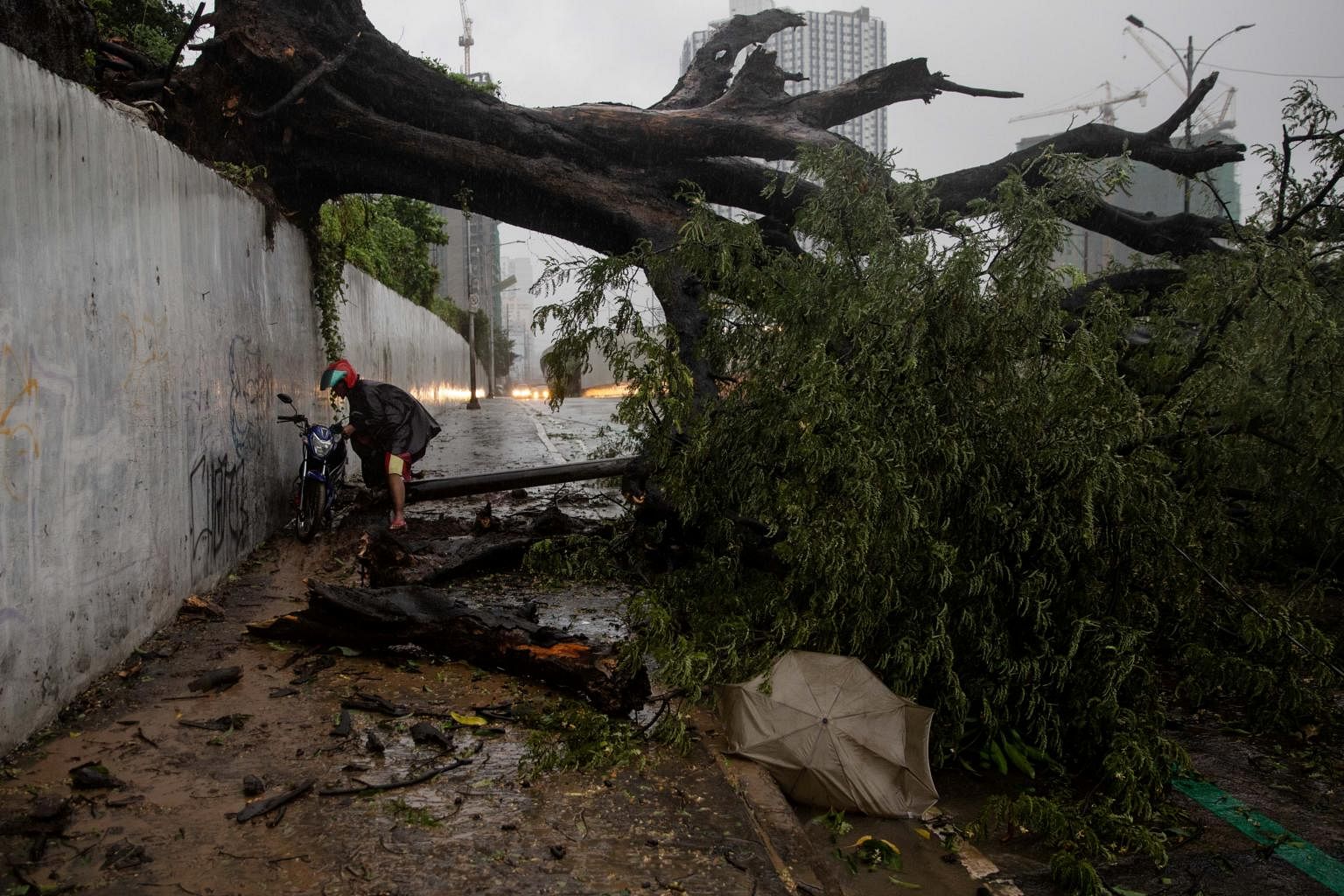
From late Wednesday till noon on Thursday, hurricane-force winds and a heavy downpour battered Metro Manila.
By early morning on Thursday, huge swathes of the metropolis - home to some 13 million - were under waist-high flood waters. Trees, electric poles and a myriad of debris were strewn across roads. One photo posted on Twitter showed the steel roof of a house dangling precariously on a bunch of electric cables.
Key highways were unpassable, and close to four million people were suffering through a prolonged blackout.
Mr Teodoro, the mayor, said Vamco caught Marikina, which had always been flood-prone due to its proximity to a river named after the city, by surprise.
But a top disaster-response official insisted the government "was not caught flat-footed". He said those caught in the typhoon's fury might have been too complacent and relied more on their instinct than heed government warnings.
Mr Duterte himself took issue with critics who accused him of sleeping on the job as the hashtag #NasaanAngPangulo (Where is the President) again trended.
"People are saying I'm not doing anything, just sleeping. No one here has has had any sleep," he said.
Vamco came on the heels of Typhoon Goni, which was ranked as among the strongest typhoons to hit the Philippines in years, with winds exceeding 300kmh.
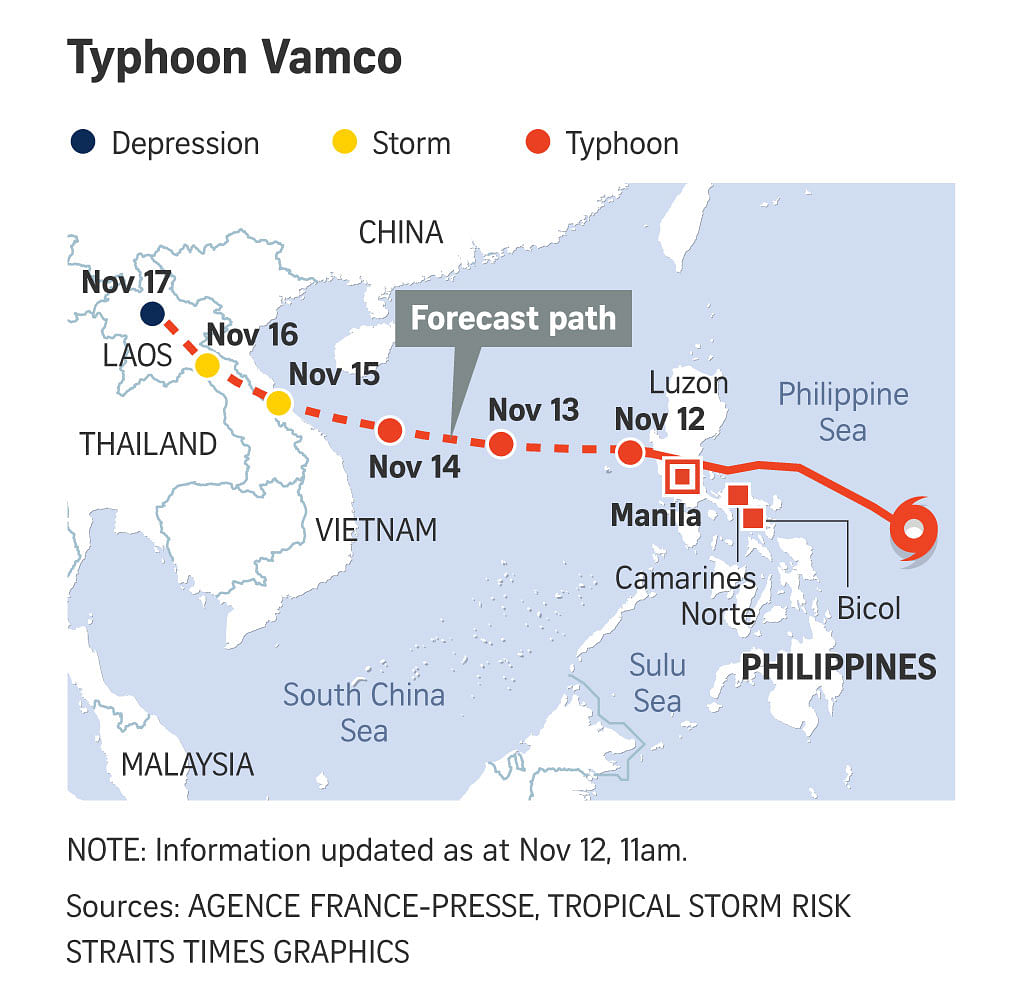
Goni was expected to devastate Metro Manila and regions south of it. It left at least 26 dead and displaced close to a million. But by day's end, it largely bypassed Metro Manila, with no fatalities reported there.
Vamco is now evoking memories of Typhoon Ketsana, which in 2009 killed 246 people, triggered widespread flooding in Metro Manila as it dumped a month's worth of rain in 24 hours, and overwhelmed rescue services.
Ketsana later became the focus of marathon climate talks, with developing nations and green groups saying it was an example of the type of climate disaster poor nations could face in a warmer world.
Outside Metro Manila, Vamco barrelled across regions still reeling from Goni and six other cyclones that had sliced through the Philippines one after the other since Oct 11. There were reports of landslides in mountainous villages, and storm surges pummelling coastal towns.
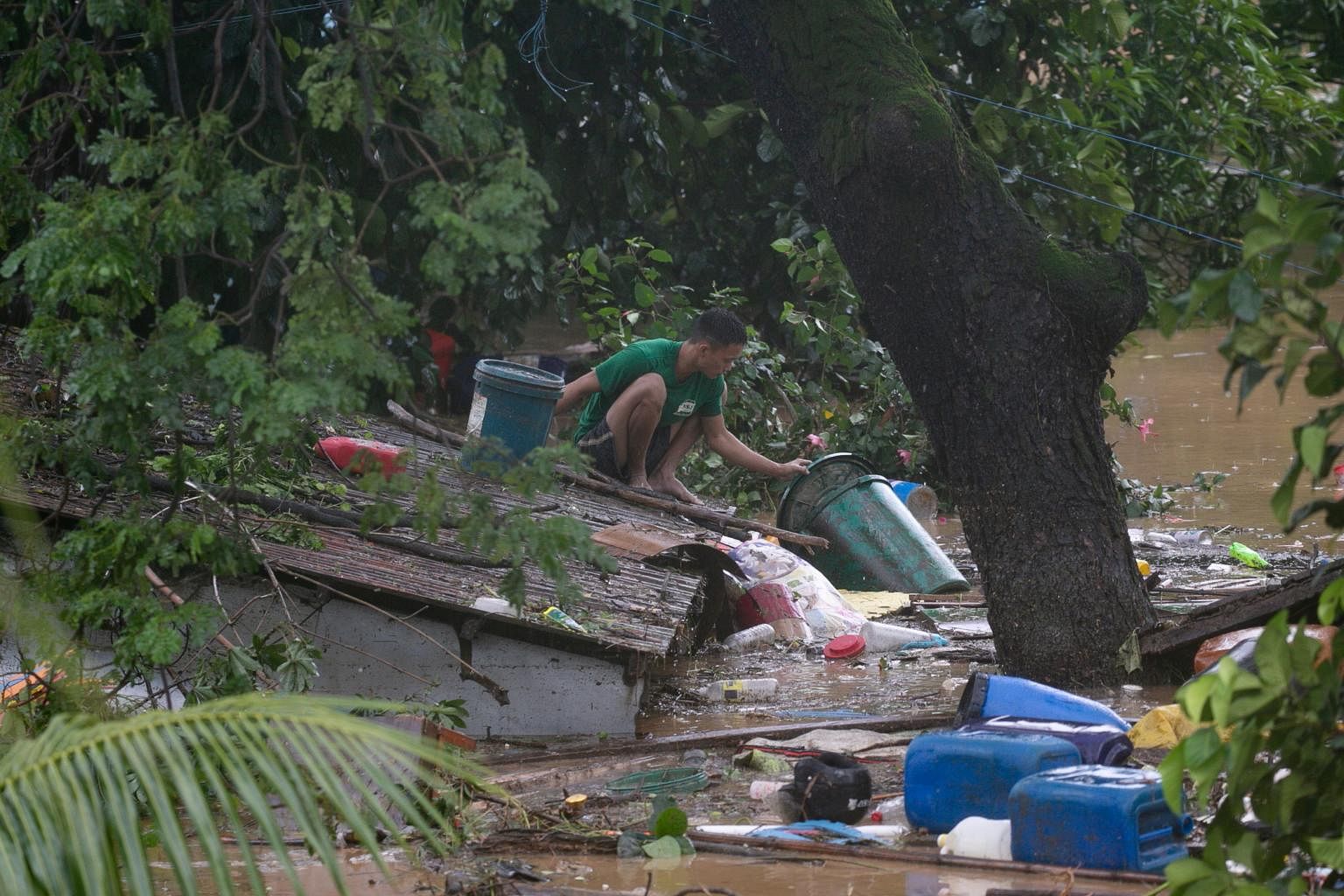
At least two people died, and four others were reported missing, the Office of Civil Defence in the Bicol region reported. A separate report said a boy in Cainta town, in Rizal, was killed after a tree fell on him.
The state weather agency forecast two to three more typhoons to enter the Philippines in November and another one to two in December.
The Philippines is the first major landmass facing the Pacific cyclone belt. Hence, it gets hit by an average of 20 storms and typhoons each year.
The typhoon season usually starts in June and peters out by November. But in recent years, the strongest typhoons have been slamming the country as the year draws to a close in November and December.
Typhoon Haiyan left more than 7,300 people dead and missing after barrelling through central Philippines in November 2013.
Singapore aid agency Mercy Relief on Wednesday launched a fund-raising appeal for victims of recent storms and floods in South-east Asia. The appeal runs until Dec 10.
Mercy Relief chairman Suhaimi Rafdi said in a statement: "Our utmost priority is to provide emergency relief aid of food packs, clean water, hygiene kits, blankets and tarpaulin to the affected communities in Vietnam and Philippines.
"The situation is expected to worsen in the coming weeks and our response team will be working closely with our local partners and authorities to assess the situation."
The public can make their donations via the following channels:
1. Credit card donation via Mercy Relief's website
2. Crossed cheque made out to "Mercy Relief Limited" with "Southeast Asia Flood & Typhoon Relief 2020" and e-mail address written on the back of the cheque, and mailed to Blk 160, Lorong 1 Toa Payoh, #01-1568, Singapore 310160
3. Fund transfer to Mercy Relief's DBS Current Account 054-900741-2
4. Crowdfunding via giving.sg for the "Southeast Asia Flood & Typhoon Relief 2020"
